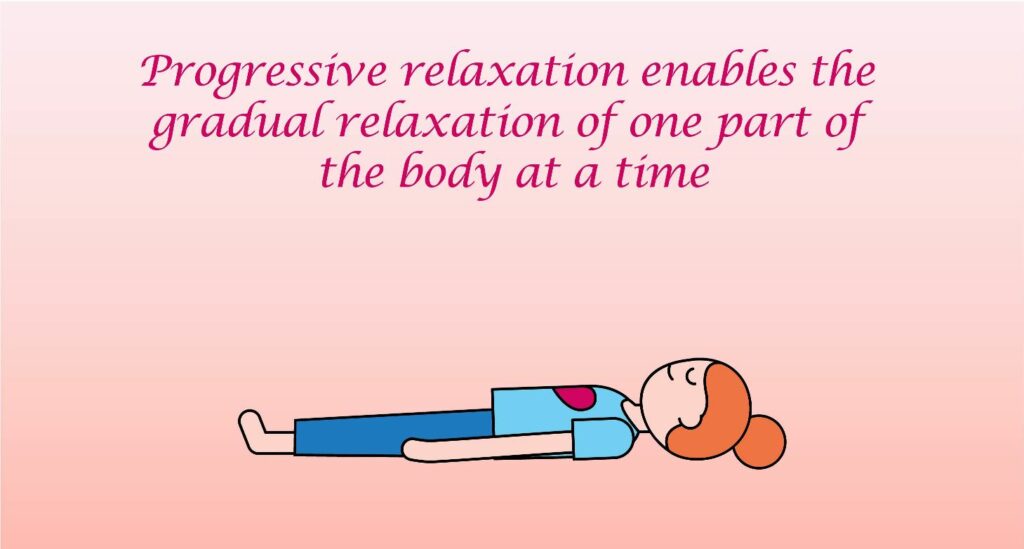Stuttering is not simply biological or completely psychological. It is quite complex, and everyone stutters differently. Hence there is currently no perfect cure for stuttering. You can, however, learn to manage or significantly overcome your stuttering with the help of speech therapy. Speech therapy includes several stuttering exercises for various age groups depending on the intensity of their stutter.
Do you stutter? Did you have no access to formal speech therapy? Haven’t been to your speech therapist recently?
You can practice exercises to stop stuttering at home. Hundreds and thousands of others have tried and benefitted from these exercises. You too, can.

Here is our compilation of eleven exercises for adults who stutter:
1. Diaphragmatic Breathing
Diaphragmatic or costal breathing has been a popular breathing exercise for stuttering speech-therapists use. Several therapists and speech-language pathologists (SLPs) now use deep breathing as a tool to help their clients relax their articulators.

How to Do Diaphragmatic Breathing Exercise to Stop Stuttering at Home?
During costal breathing, the instructor or therapist asks the person to sit or lie flat on their back. The aim is to achieve relaxation. The person should bend his knees and get sufficient head support.
The person who stutters should place one hand on their chest and the other on their belly. They should inhale through their nose slowly and calmly. They need to feel the air fill up their stomach as the hand rises and moves forward. Their shoulders and chest should remain immobile.
Next, they should begin exhaling. The hand on their chest should remain still.
It is a simple breathing exercise for stuttering. You can find guide videos on YouTube as well. We have one right here, so you can practice it for 5 minutes every day at least thrice.
You will notice that with regular practice, it will help you manage your fear or anticipation of stuttering. It may even reduce escape and avoidance behaviors.

2. Progressive Relaxation
Stress and anxiety can worsen anyone’s stutter. You may have experienced intense blocks and repetitions while speaking in front of your class or an audience.
Progressive relaxation technique helps relax your articulator muscles; it also relieves the symptoms of anxiety, hypertension, general muscle stress, and tension.
How to Practice Progressive Relaxation Exercise to Reduce Stuttering?
Find a quiet and comfortable place. Play some relaxing music, and remember to breathe through your nose throughout the exercise.
Either sit on a chair in a relaxed manner or lie down flatly on your back.
Keep your arms relaxed, away from your body with the palms facing upwards.
Keep your legs slightly spread, so your feet are comfortably apart.

Focus on every muscle from your toe to head. Slow your breathing down. Tense the muscles of your feet for 5 seconds and then relax them.
Next, do the same for your thigh muscles. Then move to your hip muscles, stomach muscles, chest, biceps, neck, and face.
Take a 20-second break between the tightening of the next set of muscles. Don’t forget to breathe while successively tensing and relaxing the muscles.
This relaxation exercise for stuttering will help you feel in control of your body and reclaim confidence. In stuttering therapy, progressive relaxation aims to help clients relax the muscles involved in stuttering.
3. Light Articulatory Contact
Light articulatory contact refers to minimal contact between the lips, teeth, tongue, and hard palate. The technique teaches people who stutter (PWS) to use light mouth movements like tongue exercise for stuttering to allow a smooth flow of air while talking.
It enables the speaker to move to the next sound with a smooth movement and an effortless voice. Consonants typically produce high articulatory pressure, which is natural.
Learning this particular speech exercise for stuttering will help you reduce the articulatory pressure.
How to Practice Light Articulatory Contact Exercise?
You can learn light contacts at home from the video.
Your speech therapist will help you practice light articulatory contact on all consonants. You will learn how to implement it on single-syllable words/sounds. Gradually, you will learn to apply the technique on initial, medial, and final positions.
For example – you will learn how to establish light articulatory contact on the consonant /p/ in pink, poppy, and top.
Soon, you will graduate to phrase level, sentence level, and conversational level applications of light articulatory contact.
Once you learn this technique from your therapist, you can always practice it at home alone or with family.
4. Speaking While Exhaling
It is a fluency shaping method. Speaking while you have begun exhaling can modify your onset of phonation.
How to Practice ‘Speak While Exhaling’ to Stop Stuttering at Home?
You can master this technique all on your own. First, inhale with your nose and begin speaking as you start exhaling.
When you exhale, your vocal folds are more relaxed. They cannot come together to hold the air back. It reduces the laryngeal muscular tension.
The working principle of this method is quite simple, and you can keep practicing this at home whenever you speak to your family members or friends.
5. Pausing and Phrasing
It is another fluency shaping technique. It lengthens the natural pauses. Or, it can teach you to insert additional pauses in your speech between the words and phrases.
You can join a stuttering video calling group if you currently don’t have access to a speech therapist. The right frequency of pausing and phrasing may help you reduce the rate of your speech and decrease muscle tension.
You can use this speech therapy exercise for stuttering while reading out loud, speaking, and in conversations. A person who stutters may have to pause every 2 to 5 syllables while talking.
Pausing and phrasing are one of the most popular exercises to stop stuttering. Pausing will also give you the time to breathe deeply and begin the next word with light contact of the articulators.
6. Prolonged Speech
You can best master prolonged speech under the guidance of a speech therapist. This stuttering exercise can help you achieve fluency by stretching out the vowels.
It combines the techniques of light articulatory contacts along with gentle onsets and pausing. This combinatorial technique can enhance fluency, slow your rate of speech, and reduce articulatory pressure. It will give you a sense of control while you are speaking.
You will initially require the guidance of a therapist to master prolonged speech. You can also practice ‘Prolonged Speech Exercise’ for stuttering with a verified speech therapy app like Stamurai. Later, you can practice it and apply it at home.
7. Pull Outs
You can perform pull-outs correctly and with ease at home after a clinician has shown you the technique.
You can use it when you face an unexpected stutter, and you find yourself stuck.
The therapist will teach you how to stretch the sound you got stuck on and slide out of it easily and blend into the next sound.
It is a stuttering modification technique that modifies the stuttering while it’s occurring.
You can practice it regularly on your own to get out of stubborn stutters when you speak.
This exercise for a stuttering adult can teach you
- How to reduce muscular tension?
- How to reduce the stress of stuttering?
- How to stutter more fluently?
8. Mindfulness and Meditation
A recent 2018 study shows that including mindfulness in your daily routine can benefit your speech fluency.
Just like most of the techniques we have discussed above, you can begin mindfulness meditation with the help of the Stamurai app.
Mindfulness will reduce your mental stress and anxiety while communicating with others. The other positive results might include a decreased rate of avoidance and improved control over the negative emotions.
You might be able to reduce anticipation of stuttering by meditating daily with the help of a guide app.
9. Try Yoga
Yoga is all about finding the right balance between your body and mind. Begin with the light stuff like upward facing dog, downward-facing dog, the standing backbend, forward bend, camel, warrior, and pigeon poses.

These yoga poses are all light and fairly easy. You can find guides to assume these poses quite easily on YouTube.
The aim of these poses is to stretch the muscles of your limbs, midriff, and neck muscles.
According to Kauffman, studies show that yoga not only reduces stress but also gives the person a sense of control and confidence.
You can also manage your breathing better, apply deep breathing techniques, and feel more in control of your articulators by including pranayamas within your daily yoga routine.
Dedicate 20 minutes every day while you are at home to see a marked difference in your metabolism, confidence level, mental health, and emotions related to stuttering.
10. Note Your Daily Accomplishments
Keep a journal. You should note the smallest of the small positive changes you observe in your speech.
For example, you answered the door with a smile and a “Hi” without stuttering. Or, you went to the grocers and initiated a conversation.
You can also include stories of how you came in touch with other PWS who have motivated you. Share your stories in forums and communities.
Keep a digital journal to include photos, videos, and screen-grabs. Make your journey towards fluency memorable and inspiring.
It will help you focus on the positives of stuttering rather than let you dwell on the drawbacks.
11. Challenge Yourself to Approach and Overcome New Situations
Make a list of things that scare you right now.
For example, answering phone calls, placing an order via phone, talking to a new guest, or speaking during a Zoom meeting.
Next, once you begin to see improvements in your speech after you practice your stuttering exercises, breathing and yoga daily, try to face one challenge at a time.
At first, you may find it tough to step outside your comfort zone. Joining virtual stuttering support groups and attending moderated video calling sessions with other PWS can help you garner the confidence you need for approaching the new situations.
Make it a part of your exercise to challenge yourself each day while at home by stepping out of your comfort zone.
12. Try Aerobic Exercises
Recent studies show that light aerobic exercising can help improve fluency.
10 adults who stuttered, participated in a study at the National Institute of Rehabilitation and medicine (NIRM). They ran on treadmills and rode stationary cycles for 30-minutes under the supervision of a physical therapist.
They also received speech therapy along with the control group. This continued for 6-weeks.
Speech-language pathologists then evaluated the stuttering severity of both groups. Results indicated that the ones doing aerobic exercises regularly stuttered significantly less than before.
13. The Linklater Voice Progression
Have you noticed how singers and actors do “funny” vocal exercises before each performance? It is a part of Kristin Linklater’s Voice Progression - a collection of vocal exercises that ease the tension of the throat muscles and ‘frees’ the voice.
It is an integral part of renowned actor training programs, such as Yale School of Drama. A recent publication shows that the Linklater technique can reduce the impact of stuttering among adults.
The technique focuses on the following -
- Physical awareness of the tension building up in and around the throat.
- Relaxing the breathing and throat muscles to allow easy flow of sound
- Freeing the sound vibrations
- Undoing the tensions in the jaw, tongue, lips and throat.
- Providing strength to the voice
Although it is not a conventional component of any stuttering therapy or speech therapy, research findings indicate that the Linklater Voice Progression can increase fluency by soothing the muscles involved in breathing and speech.
Few Final Words
These are 13 easy and exciting exercises that can help you become more fluent. They can also help you retain your fluency long after you have had your session with your speech therapist.
These are exercises that most speech therapists and SLPs recommend. However, you can also practice some of these at home regularly to see a noticeable difference in your stuttering frequency and intensity.











